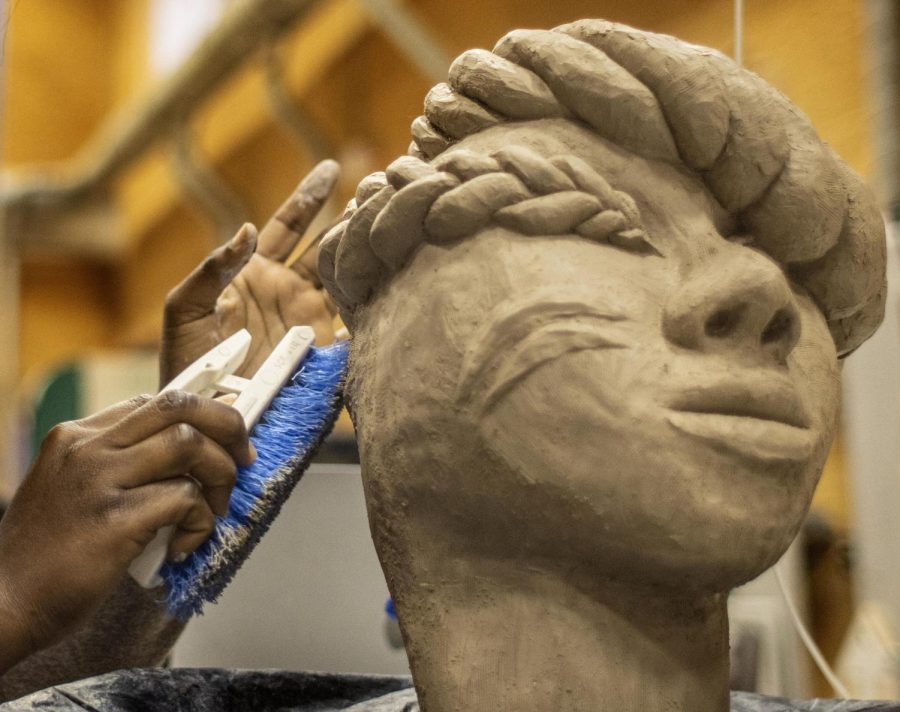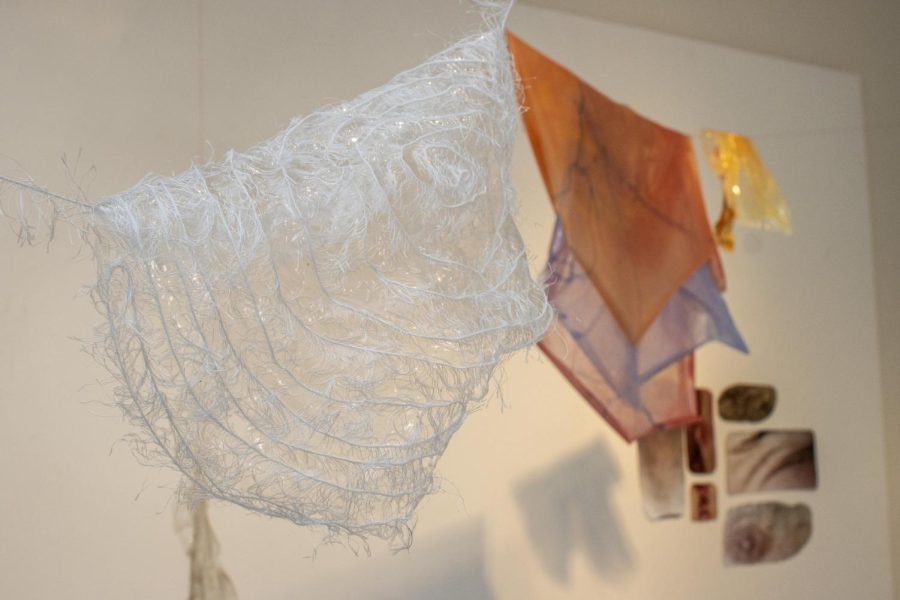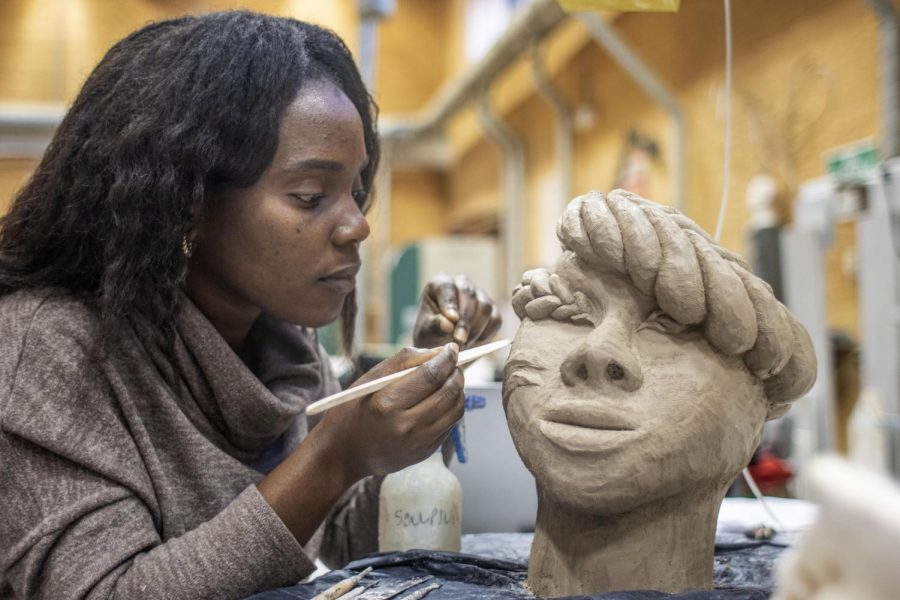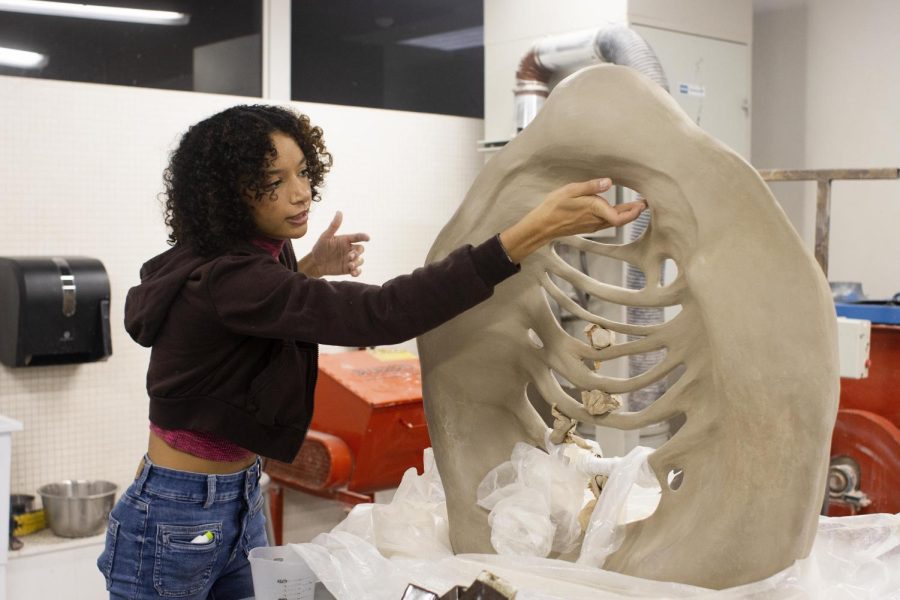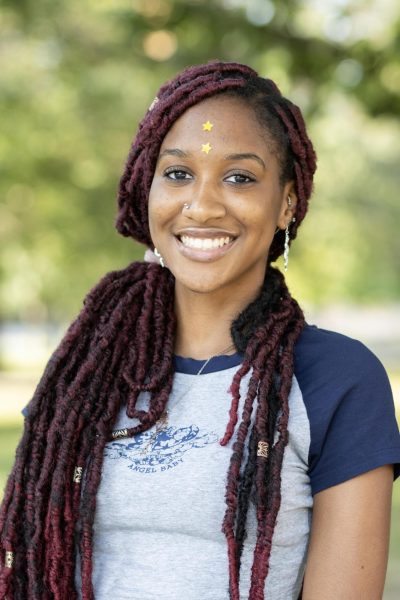Students tell stories through their art
Candy Fordjour Frimpong, a graduate student studying art, details her ceramics project in the Ceramics Studio Sunday afternoon. Fordjour Frimpong said with her artwork she hopes to promote a message of diversity. “I want to use my indigenous background to relate well with the contemporaries around [Charleston],” Fordjour Frimpong said.
November 9, 2022
Art; a word that takes many forms. For some, it can mean music, while for others, it can be theatre. For many of the students here on campus, it can also mean physical artwork.
Art is everywhere, and for three students, it can be created through struggles, beauty and pain.
Grace West, a graduate student studying art, is currently working on a piece that focuses on the body and how it changes over time. The trick? She’s using glue as her main material.
“I’m working with glue.. So these kinds of structures are made up like Elmers glue, like a PVA kind of glue,” West said. “The ones that are more transparent are like a gel medium.”
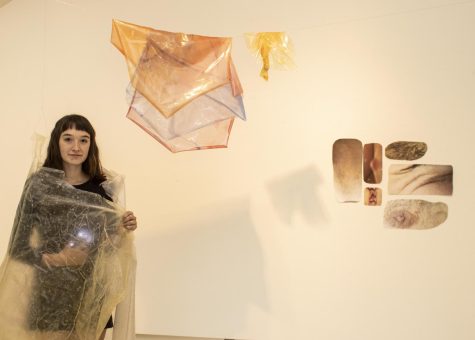
To help create this piece of art, West said that she has taken pictures of her own body, as well as her partner’s body to showcase age and growth.
“With age or as we grow, our bodies change and that usually comes with marks, hair, stretch marks, wrinkles, smile lines, so things that we want to like celebrate,” West said. “But society tells us that they need to go away like we need a face blurring cream, or something like that.”
West admitted to struggling to love herself with all the societal standards of beauty out there.
She hopes that through her piece, she can not only love herself more, but actually allow people to love themselves for who they are and accept these imperfections.
“I’ve had difficulty with this myself, and trying not to conform,” West said. “So this art is basically about trying to make myself find these things, these parts of me beautiful, and hopefully allowing other people to see them.”
Candy Fordjour Frimpong, a graduate student studying art, wants to share her story of being an immigrant in her current art piece.
“Being in a new space, I feel like I have to explore myself better to know myself and a way of navigating my way around here,” Frimpong said. “That’s the main reason why. And through that I have these feelings, thoughts about where I’ve been, so that is my main focus. And I incorporate this and the feelings and thoughts that I experienced and some of the immigrants are on here, their experience as well. That is what I incorporate in my work.”
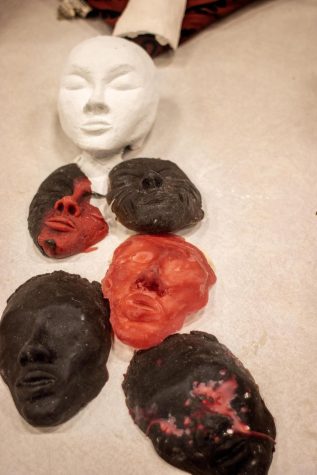
Upon further inspection of her piece, most audience members will see that the people in the creation do not have eyes. Frimpong said this symbolizes language barriers, and how it can sometimes be difficult to communicate.
“So most of my work, they don’t have eyes cause communication is not there, always somewhat limited,” Frimpong said.
Ashley Spencer, a senior studio art major, said she is working on some ceramic pieces that symbolizes something beautiful being hurt and abused.
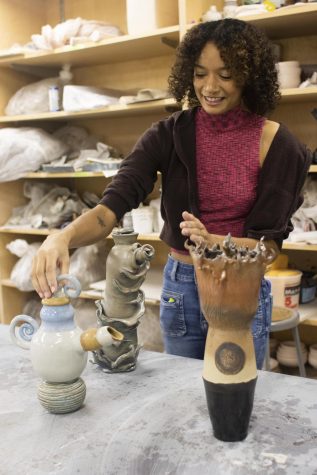
She starts by explaining how her vessel, a vase, is similar to the human body. It has the foot, the belly, the neck and the lip. But then, as the viewer may notice, there are indentations all over the neck, all over the body.
This can leave the viewer to believe that behind a vessel so beautiful, tragedy has struck too.
“I took this idea and applied it to physical abuse,” Spencer said. “When you make a precious thing, when you build it from the ground up like a child, why would you ever hit it? Why would you ever destroy it? Why would you ever mark it for life? So that is the commentary here, which is physical abuse.”
Adriana Hernandez-Santana can be reached at 581-2812 or at [email protected].






































